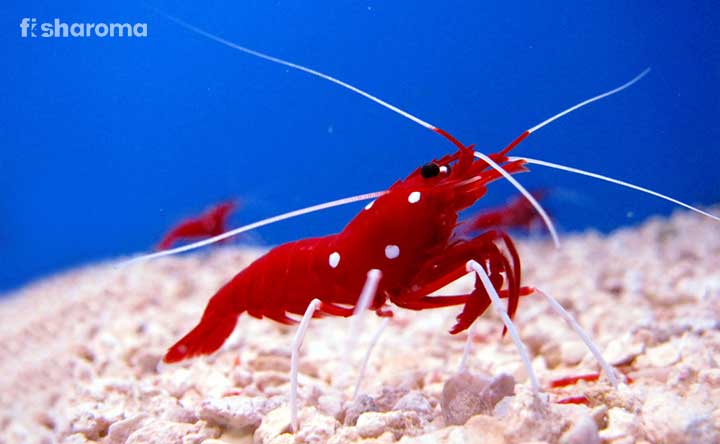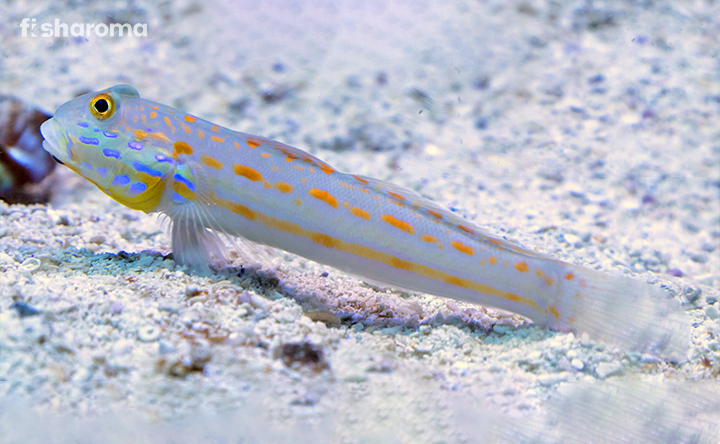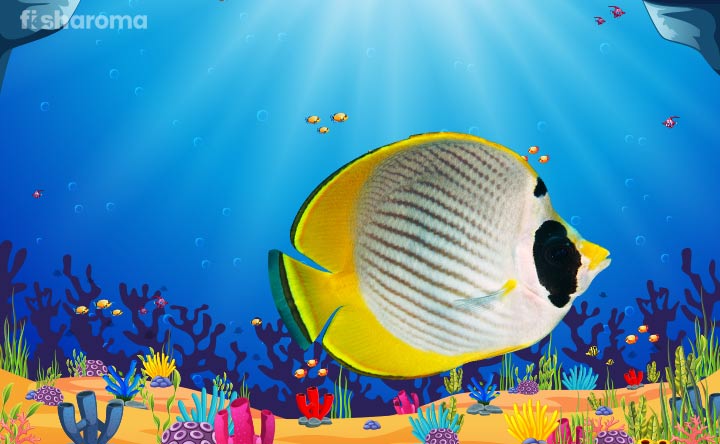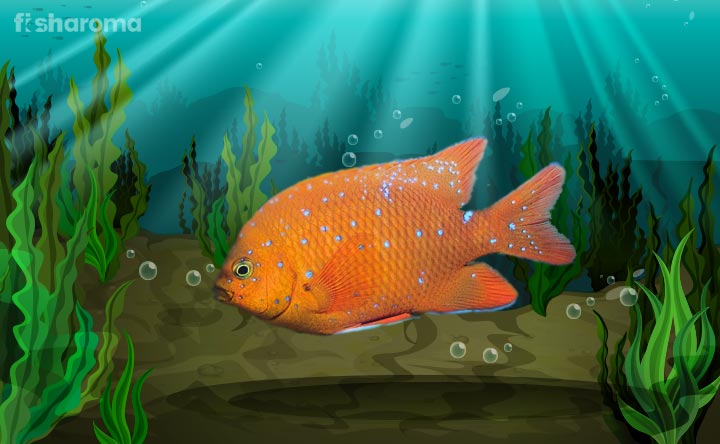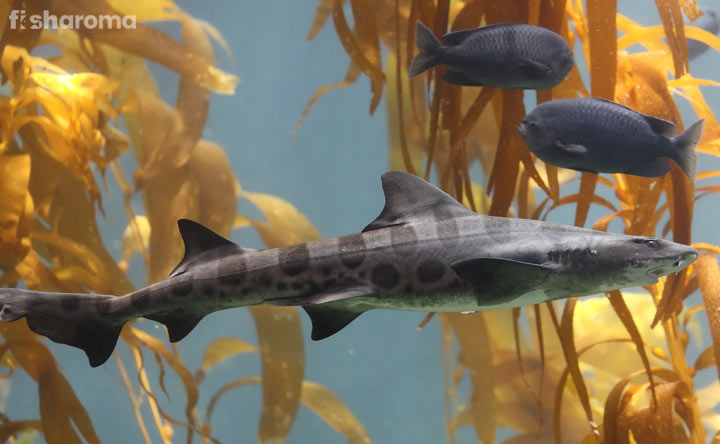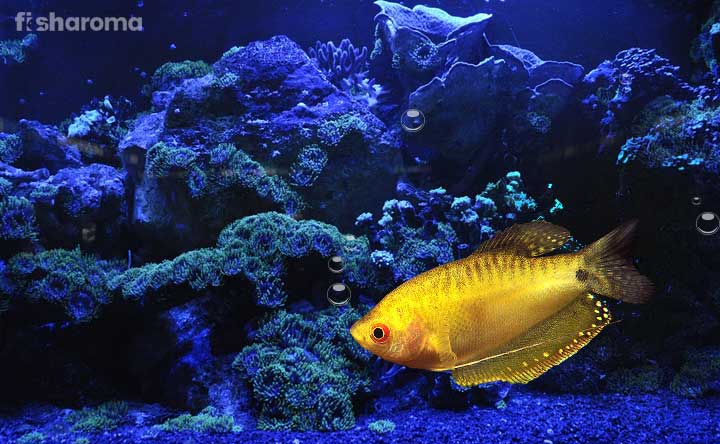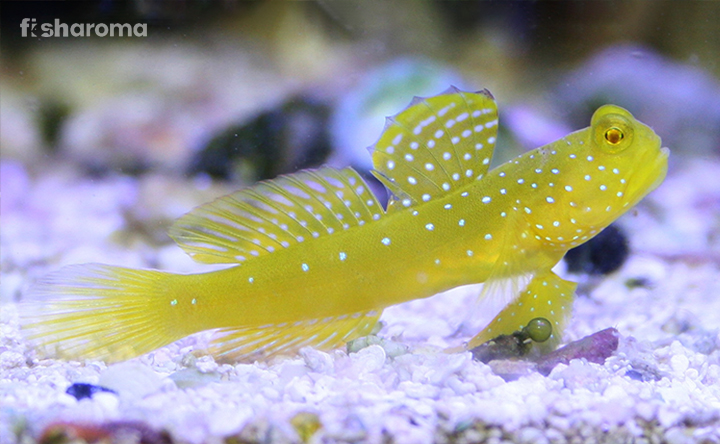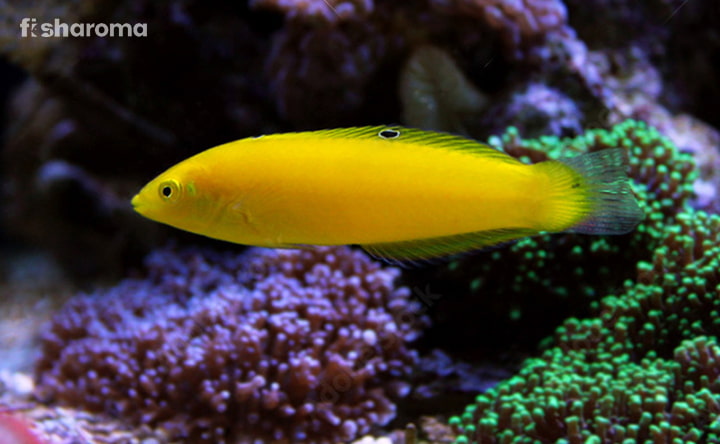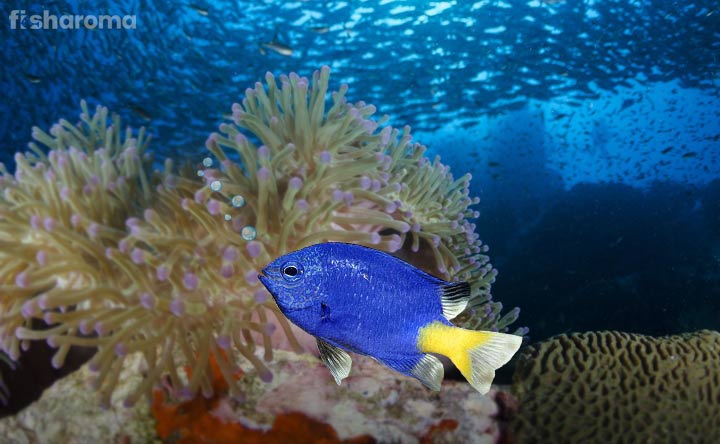Panther Grouper-A Care Guide For Our Barramundi Cod

- Origin & Habitat of Panther Grouper
- Appearance of Panther Grouper
- Behaviour of Panther Grouper
- Lifespan of Panther Grouper
- Diet of Panther Grouper
- Tank Requirements for Panther Grouper
- Water Type for Panther Grouper
- Compatibility for Panther Grouper
- Breeding of Panther Grouper
- Diseases of Panther Grouper
- Summary
Panther Grouper, which is also known as the Humpback grouper or Barramundi cod and so on are a beautiful species of fish, an aquarist-favourite for its distinctive polka-dot pattern. These saltwater species are very appealing to the eye when they are young, and with time, they have a subtle dullness in colouration which still looks unique.
However, despite being eye candy, maintenance could be tough. Seems like it is not a problem anymore as we walk you through the simple, and all-inclusive care guide. To solve it all and have no second thoughts, the guide enables you to bring these patterned gifts of nature home, all safe and comfortable. So, let us get started.
Key Specifications of Panther Grouper
There are a few things, we must brief you with before getting you started on this very detailed look:
| Scientific Name | Cromileptes altivelis |
| Origin | Southern Japan to Palau, New Caledonia and southern Queensland, Australia. |
| Lifespan | Over 20 years. |
| Colours/Patterns | White with black spots (Young)Grey or Beige with black spots (Old) |
| Temperament | Aggressive (Predatory) |
| Size | 24-27 inches (Rarely larger than 20 inches in the aquarium) |
| Diet | Carnivorous |
| Family | Serranidae |
| Compatibility | Large and aggressive tank mates. |
| Tank size | A minimum 300-gallon tank for one. |
| Care level | Easy to moderate. |
Overview
Scientifically known as the Cromileptes altivelis, a Panther grouper is a species of Actinopterygii or marine ray-finned fish, a Grouper from the subfamily Epinephelinae which is in the family Serranidae also including the anthias, and sea basses. Panther Groupers are also known as Humpback Groupers, from their hump-like appearance. The unique polka-dot pattern has also earned them the title of a Polka-dot Grouper.
There are 159 species of Grouper fishes and Panther Grouper is one of them. They are saltwater fishes, so putting them in tanks might be a complicated task at first for their huge size and rapid growth. It can be tricky to find them, appropriate tank mates, as they are predatory in nature and it may lead to accidental loss of a weaker or peaceful fish breed, if kept together.
Origin and Habitat of Panther Grouper
Panther Groupers are found across the tropical waters of the central Indo-West Pacific region, in a huge amount. Although, they originate from the Eastern Indian Ocean and the Western Pacific Ocean and can be found from Southern Japan in the North to Southern Queensland, Australia in the South. They usually reside in clear waters from seaward reefs and lagoons, but they prefer dead or silty areas. They naturally live 2 to 40 meters deep under the water (6.6 to 131.2 ft).
These saltwater creatures prefer to swim slow, and with their heads down as a result of their decently large size. The tank needs to be suitable enough to keep their aggression to a minimum, and their carnivorous needs must be met. They are of shy nature and initially may try to hide. Hiding spots like artificial caves or rocks are preferred, as these are less space-consuming and serve the purpose simultaneously. Lighting and obstacles should be low-key, as they require space, and these beautiful polka-dot wonders really appreciate the comfort of a spacious, nature-like ambience in the aquarium.
Appearance of Panther Grouper
The Panther Grouper or Polka-dot Groupers are well-known for their distinctive polka-dots on a white build. Small dark dots surround their entire body. These fishes with growing age might have darker blotches covering their body with a base of grey or beige varieties. The body is quite high and laterally compressed. The stocky yet strange visual effect is evident from its extended snout and concave profile, which essentially gives them a hump-backed appearance. All this is pretty much evident from all the names we know them as.
Size
These Groupers are medium-sized fishes (large enough for the tank). They can grow up to 28 inches. The particularly distinctive body shape of this sort of Grouper makes it quite impossible for a mix up with the others.
Colour
The Panther Groupers are usually all-white to beige, or dull grey as they grow. These beautiful species of fish have clear-cut dots all over their bodies. The dots tend to become more like darker blotches over the body, variable in size, as time progresses, and they turn into an adult from a younger version. They have large and graceful fins and together, the colouration and body shape serves as perfect camouflage.
Behaviour of Panther Grouper
As mentioned, we are familiar with the aggressive nature of this species. Panther Groupers are territorial and defensive by nature. They are demersal, mostly solitary and ambush predators. In easier words, they like to wait for their prey as they are not the chasing type, and lean towards hunting by stealth or luring with camouflage techniques.
It might be a challenge to feed them at first for their nature. Their dense feeding activity is maximal at either sunrise, or sunset. It is in fact surprising but despite their aggressive, and out-there nature, they are really shy at first and prefer hiding. They are really an interesting addition to your aquarium, as they have a lot more to offer other than the fact they look wonderful.
Their behaviour although prevents flexibility in the choice of tank mates. Groupers should never be paired up with smaller or weaker species like clown fishes, or damsels, as they might end up as prey sooner or later. They might be compatible with the same species in the tank, only if they are tamed to be kept together early on or, the aggression just leads to madness if late. It is mostly recommended to only pair them up with similarly strong and aggressive fish breeds to be compatible.
Lifespan of Panther Grouper
They could visibly be quite up in the charts when it comes to investment, Panther Groupers live long. A healthy fish is expected to live up to 20 years, provided, you take good care of them. The amount of years is not a joke, it is a factual long-term commitment. A strong mindset is hence necessary if you are planning to take responsibility for these beautiful beings that glorify and enhance the aura of your aquarium all by itself.
Diet of Panther Grouper
The Panther Grouper is a predatory fish that does not hesitate to prey on, or consume anything that can fit its mouth. Their carnivorous nature may lead to huge requirements, in the department of meaty items high in proteins like the crustaceans, and so on. If trained, they can also be tamed to feed on marine pellets, or fish food.
The possibility of all accepting that as a primary feeding means is slight. However, the only worry-some thing about them is maybe their carnivorous diet, and a huge appetite. Still, things can be under ease and control if, they just fed from time to time, a little more than you would with other breeds.
An ideal diet list for them are as follows:
- Frozen Shrimp (Moistened at the time of feeding)
- Crab meat
- Mussel meat
- Feeder fish (should be fed rarely as they do not provide all the required nutrients)
- Silverside
- Squid
- Krill
Tank requirements for Panther Grouper
To make the living conditions suitable and comfortable for them, the tank must be really spacious. Other than the space factor, it is recommended to recreate their natural habitat in the aquarium to make them feel safe and at home.
To prevent them from feeling all stressed and claustrophobic, here goes a few rules you need to follow:
Tank Size
A minimum of 300 gallons (1136L) would be ideal. The size of the tank prevents the thought of added pressure of regular cleaning but Panther Grouper consume huge amounts of food, hence, they create huge amounts of waste.
Substrate
They have no preferences in regards to the bottom substrate. They are best kept in a “fish only” or a “fish with live rock setup” as they might devour the mobile invertebrates of a reef aquarium. The bottom of the aquarium must be covered in a sandy, fine-grained substrate. In addition to decorations on top, live rock is a popular choice.
Filter
A strong and effective filter is essential because the Panther Grouper’s diet can create a mess. Usage of the filter outlet to create some water movement.
Ornaments
As a result of their shy initial nature, they tend to look for good hiding spots when they are young. It is their most natural instinct before they transform with age. Caves, hanging structures, figurines and so on support their particular nature well.
Lighting
The lighting should be minimum as their nature is stealthy. They naturally belong in darker spaces of the aquatic world. It is best to maintain that and be close to recreating a nature-like scenario for them in the tank. It makes them feel at home, comfortable and stress-free.
Presence of Flora
All fishes love having vegetation in their vicinity. Make sure the fishes are residing in the presence of flora. It is good to have live plants or the artificial ones if the maintenance of the natural counterparts become complicated. Live rocks are more compatible with their hide-type nature and allow them to act naturally in their new home.
Cleaning method
We strongly suggest you to avoid the usage of chemical-based products. Often cleaning the tank prevents diseases to the life residing in it and allows the fish to stay healthy and stress-free. A simple application of soft cotton cloth to clean the walls, cleaning the filters on an alternate basis or changing waters if it appears clouded helps in the overall maintenance of the tank’s health.
Water Type for Panther Grouper
Shifting focus from other factors, let us focus on the type of water you must provide for the fellow fish breed if you are planning to add them to your aquarium must-have list. You can re-condition your water by keeping it in a separate tank and by soaking peat in a box filter in it for a few days. Once the water gets an amber tint, you can add it to the main tank.
A few other pointers to provide the ideal type of water for Panther Grouper are as follows:
| Temperature | 22-25 Degrees Celsius |
| pH Level | 8.1-8.4. |
| Gravity | 1.021-1.023 |
| Water Hardness | 8-23 dH. |
- Temperature
The water temperature needs to be kept between 22 Degrees Celsius and 25 Degrees Celsius, for the comfort of the fish.
- pH Level
The pH level should remain at an all-time 8.1-8.4 as it is a very important key feature for their nourishment.
- Gravity
The specific gravity of 1.021-1.023 is required.
- Water Hardness
It is recommended to keep the dH level somewhere between 8-23 dH.
Compatibility of Panther Grouper
Panther Groupers are aggressive in nature, hence they require similar-natured companions to exist with. They are never compatible with a peaceful community, lacking their true nature and powerplay.
Suitable Tank Mates for Panther Grouper
Here are a few suitable tank mates for Panther Groupers:
- Anglerfish
- Butterflyfish
- Sharks of smaller size
- Eels
- Lionfish
- Pufferfish
- Tangs
Unsuitable Tank Mates for Panther Grouper
Panther Groupers are aggressive in nature, so they require similar-natured companions to exist with. They are never compatible with a peaceful community, lacking their true nature and powerplay. Ideally, they must not be kept with peaceful, and smaller species of fish. If they are not big or similarly aggressive in nature, they will end up as prey.
Breeding of Panther Grouper
The breeding process of a Panther Grouper may just be virtually impossible. As we well know, they are sexually protogynous hermaphrodites or sequential hermaphroditism. It happens in some fishes where there is a present ability to transition from female to male(protogynous hermaphroditism). The fishes in this case are female by birth, but have the ability to be a male in the future as they grow older. Typically, only the most dominant, mature females undergo this transformation in the absence of a dominant male.
The information on how to breed them is very little. It is although factual that they are open water egg scatterers. So it would require a huge tank to technically be able to support that, even more than the stated 300 gallons just for standard care.
Diseases of Panther Grouper
The young Panther Grouper need more care as they are not as hardy as the adults. They are still a relatively hearty species. The adult Groupers are comparatively tough, yet even they come in close contact with multiple parasites like nematodes and cryptocaryon.
Treatment
Quarantining a grouper is necessary for starters. If any unusual loss of appetite or open wounds are noticed a veterinarian must be contacted immediately. Otherwise, Groupers are okay with responding to any sort of treatment received, as a result of their parasite infestation. If you see any unusual behaviour or loss of appetite or any open wound that’s unexplainable, please contact your nearest veterinarian immediately.
Summary
Panther Groupers are beautiful beings with unique features, both behavioural and appearance-wise. Their appealing qualities is something that makes them a wonderful addition to the tank. Not very compatible with many tank mates yet, they can single-handedly maintain the serenity, and aura of the aquarium with their presence. Maintenance can be tricky but doable, like most species of the marine world.
Similar Care Guides you may like
- Care Guide of Bichir Fish – Just like Panther Groupers, these species have a similar lifespan of about 20 years.
- Cherry Barb Care Guide – Another very beautiful fish like the Panther Grouper, these species have moderate compatibility with most fishes.
- Paradise Gourami Care Guide – These similarly aggressive fishes have a low level of compatibility with the peaceful community fishes.

